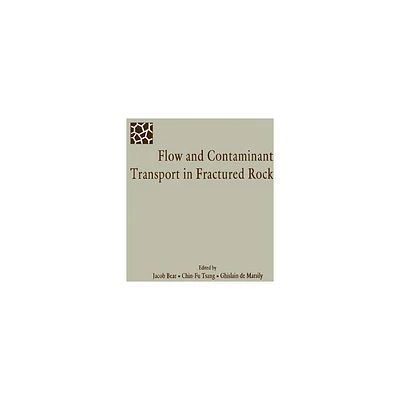Home
Folding and Fracturing of Rocks
Loading Inventory...
Barnes and Noble
Folding and Fracturing of Rocks
Current price: $79.95


Barnes and Noble
Folding and Fracturing of Rocks
Current price: $79.95
Loading Inventory...
Size: OS
*Product Information may vary - to confirm product availability, pricing, and additional information please contact Barnes and Noble
Folding and Fracturing of Rocks was first published in 1967. It was one of the first major publications aimed at developing for geologists the basic theory of stress and strain in mathematical terms and explaining how this theory could be used to solve practical problems in structural geology and tectonics. Although out-of-print for many years, it is still one of the most frequently cited and quoted texts in modern research publications in structural geology. Although texts discussing the basic theory of stress and strain had been long available in engineering, metallurgic and materials science, very few of these texts made any reference to the application of these principles to the study of rock strain, fracturing and folding processes commonly arising in geology. Folding and Fracturing of Rocks developed the theory of both small and large finite strain with particular emphasis on progressive deformation and its geological implications for the development of the structures actually observed in naturally deformed rocks. It was one of the first textbooks to discuss the practical methods for evaluating the states of finite strain in two and three dimensions and the implications of these methods to further our understanding of structural geometry. The book set out the concepts of displacement and finite strain and showed how strain states could be represented in diagrammatic forms as originally devised by Otto Mohr for states of stress. Many of the developments were novel at the time of publication and have had major applications in subsequent research. The discussions and methods of strain analysis set out in Folding and Fracturing of Ricks have stood the test of time and many of the subsequent research developments in structural geology have their origins in this book. The reasons for the relevance of this book to current research are first, the book is based on sound mathematical principles that have not become dated and second, the discussions of deformation theory are illustrated with many photographs of the structures seen in naturally deformed rocks. The author has always been of the opinion that the structures actually observed in naturally formed rocks form the key to our understanding of tectonic processes and that the development of mechanical models for the origin of these structures must always be compared with natural systems if they are to be truly relevant. John Ramsay was born in London in 1931. He did his doctoral research in the Scottish Highlands working on the deformation patterns seen in complexly folded rocks of the Moine Series and the relationships seen in folded basement and cover rocks obtaining his Ph.D. in 1954. After undertaking his military service in the Corps of the Royal Engineers (as Violoncellist and Tenor drummer) he was appointed to the teaching staff of Imperial College in 1957. Subsequently he held Professorships at London University and Leeds University. In 1977, he was appointed to a Professorship of Geology at the Eidgenössische Technische Hochschule and University of Zürich, Switzerland. John Ramsay has been author and co-author of four books and many papers in structural geology. His work in advancing structural geology has been recognized by the awards of the Bigsby and Wollaston medals of the Geological Society, the Prestwich Medal of the Société Géologique de France, the Holmes Medal of the European Union of Geosciences, the Tranenster Medal of the University of Liège, and in 1992 he was appointed to the Order of Commander of the British Empire in the Queen's Honours list.


















